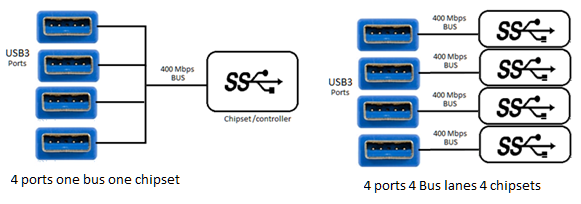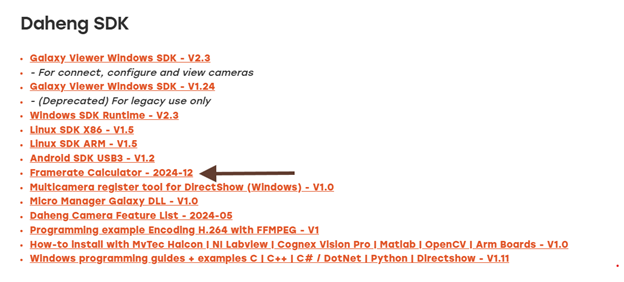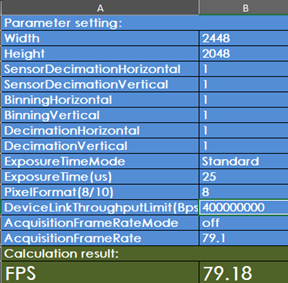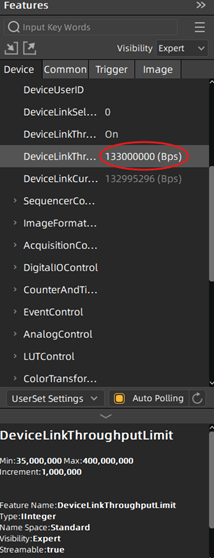Understanding Bandwidth and Frame Rate Calculation for Industrial USB3 Cameras
Bandwidth refers to the amount of data that can be transmitted over a specific interface—such as USB3, GigE, or 5GigE—within a given time frame. A higher bandwidth interface enables faster and larger data transfers. This article explores various options for bandwidth control and provides guidance on calculating the required frame rate for your industrial USB3 camera.

Table of contents
Advantages of USB3 Industrial Vision Cameras
USB3 is an ideal interface for high-resolution and high-speed industrial cameras, offering a maximum bandwidth of 480 megabytes per second (MBps) which is 10 times faster than USB2 and 4 times faster than GigE. Additionally, USB3 ports are standard on nearly all computers and developer boards.
Compared to USB2, USB3 cameras consume less processing power. However, it is important to note that a portion of the 480 MBps bandwidth is reserved for packet retransmission, resulting in a usable bandwidth of approximately 400 MBps.
Managing Bandwidth for Industrial USB3 Cameras
To effectively control bandwidth, it is essential to understand how USB3 connection functions and how to determine the appropriate frame rate values for optimal performance.
USB3 Chipset, Bus, and Ports
Many computers and host devices feature multiple USB3 ports, but these ports typically share bandwidth through a single bus connected to one chipset. As a result, total available speed is distributed among the ports.
For example:
- Adapter PCIe1x provides four USB3 ports, sharing bandwidths across them.
- Adapter PCIe4x includes four USB3 ports, but each port operates with its own chipset - ensuring four full-speed connections.

Why is it important to Limit the Bandwidth of an Industrial USB3 Camera?
When connecting multiple industrial cameras to a single computer via USB3, it is necessary to allocate bandwidth to each camera. This ensures stable image transmission with a consistent frame rate. Incorrect bandwidth allocation may lead to incomplete images mor total image loss.
Calculating the Frame Rate for an Industrial USB3 Camera
To determine the appropriate frame rate, use the Industrial Camera USB3 Frame Rate Calculator.
Previously, this tool was included with the Galaxy SDK and could be found in: C:\Program Files\Daheng
Imaging\GalaxySDK\Doc\
However, with the latest SDK update, the calculator is no longer bundled with the software. It must now be downloaded separately from our Download Area.

For example, we will connect three MER2-502-79U3C USB3 industrial vision cameras to a single USB3 controller with three USB3 ports. Each MER2-502-79U3C camera operates at a standard frame rate of 79.18 FPS when using the default bandwidth value of 400 Mbps (400,000,000 bps).

Bandwidth Allocation for
Multiple Cameras
Since the maximum throughput is limited to 400 Mbps, bandwidth must be evenly distributed among the three cameras:
With this reduced bandwidth, the new calculated frame rate for each camera is 26.53 FPS, using 133.3 Mbps (133,000,000 bps).

How to Modify Industrial Camera USB3 Bandwidth in Galaxy View Software
- Connect to the camera in Galaxy View Software.
- Navigate to: Remote Device → Device Control → DeviceLinkCurrentThroughputLimit
- Modify the default value (400,000,000 bps) to the calculated value (133,000,000 bps).
- Save the changes and ensure image transmission is stable.
By properly adjusting bandwidth settings, images are transferred smoothly and consistently from each camera to the PC, ensuring optimal performance.

















































